Cards In This Set
| Front | Back |
|
Periapical Cemento-Osseous Dysplasia
|
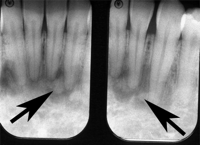 An asymptomatic lesion most commonly found radiographically in the anterior mandible. Early lesions are well circumscribed and may mimic periapical disease. |
|
Florid Cemento-Osseous Dysplasia
|
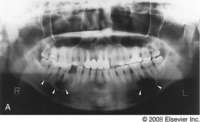 An asymptomatic lesion most commonly found radiographically in multiple quadrants in the maxilla and mandible. |
|
Ankyloglossia
|
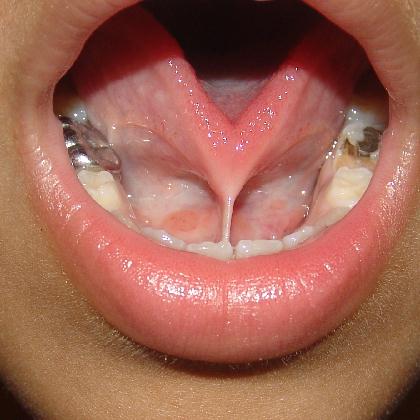 An extensive adhesion of the tongue to the floor of the mouth, often referred to as "tongue-tied" |
|
Dentigerous/Follicular Cyst
|
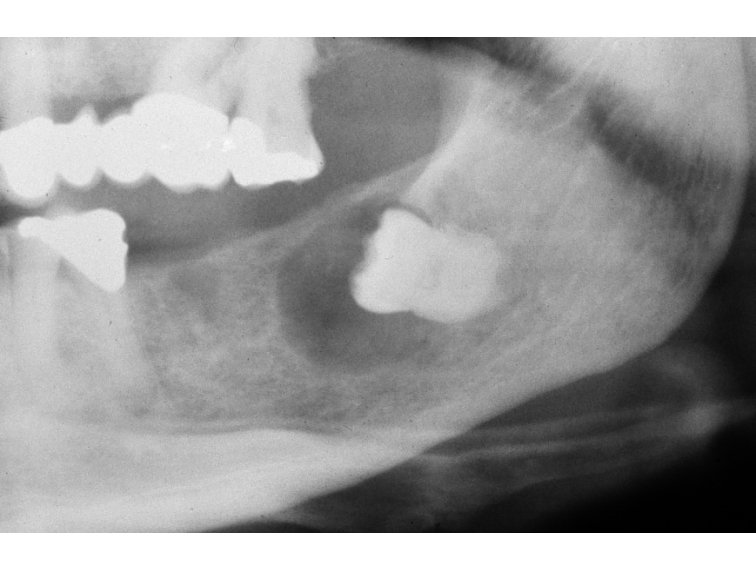 A cyst forming around the crown of an unerupted or developing tooth. The second most common odontogenic after the periapical cyst. |
|
Eruption Cyst
|
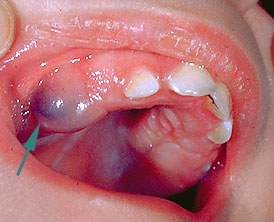 Similar to a dentigerous cyst in that it is found in the soft tissue around the crown of an erupting tooth. |
|
Primordial Cyst
|
 An asymptomatic cyst that develops in place of a tooth and most commonly found in place of the third molar or posterior to an erupted third molar. |
|
Nasopalatine/Incisive Canal Cyst
|
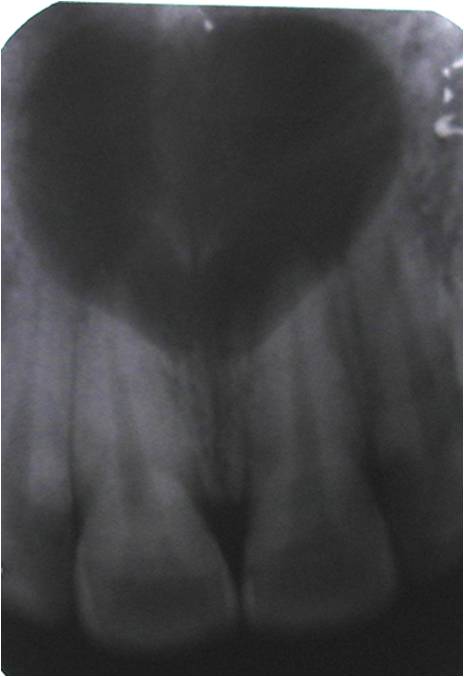 An asymptomatic cyst that is located within the nasopalatine canal or incisive papilla. Often seen radiographically as well-defined, radiolucent and heart-shaped. |
|
Median Palatine Cyst
|
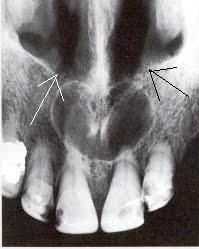 An asymptomatic well-defined unilocular radiolucency located in the midline of the hard palate, often found more posterior than a nasopalatine cyst. |
|
Odontogenic Keratocyst (OKC)
|
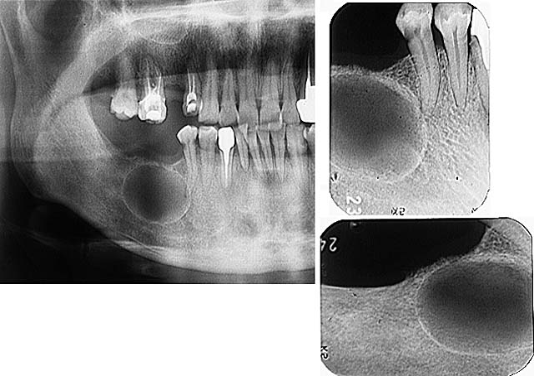 An odontogenic developmental cyst that is commonly seen in mandibular third molar region & appears as a well-defined, multilocular, radiolucent lesion. Usually associated with Gorlin syndrome. |
|
Globulomaxillary Cyst
|
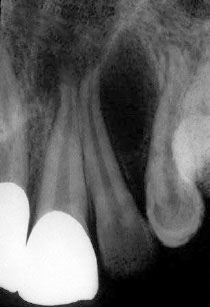 A well-defined, pear-shaped radiolucency found between the roots of the maxillary lateral incisor and canine. It is of odontogenic epithelial origin. |
|
Hypodontia
|
 The lack of one or more teeth, which may affect either deciduous or permanent teeth. |
|
Supernumerary teeth
|
Extra teeth found in the dental arches
|
|
Mesiodens
|
The most common type of supernumerary teeth located between the maxillary central incisors at or near the midline.
|
|
Distomolar
|
The second most common type of supernumerary teeth located distal to the third molar.
|
|
Concrescence
|
Two adjacent teeth are united by cementum only. Commonly seen in adjacent maxillary molars & adjacent supernumerary teeth.
|



